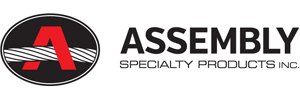OSHA Guide – Cranes and Derricks in Construction
MENU
- Introduction
- Employer Responsibilities
- Section 1400 – Scope
- Section 1401 – Definitions
- Section 1402 – Ground Conditions
- Sections 1403-1406 – Assembly and Disassembly
- Sections 1407-1411 – Power Lines
- Section 1412 – Inspections (with Section 1435(f)-Tower Crane Inspections) and Section 1436(p)-Derricks Inspections)
- Section 1413 – Wire Rope Inspection
- Section 1414 – Wire Rope – Selection and Installation Criteria
- Sections 1415 Safety Devices & 1416 Operational Aids
- Section 1417 – Operation
- Section 1418 – Authority to Stop Operation
- Section 1419-1422 – Signals
- Section 1423 – Fall Protection
- Section 1424 – Work Area Control
- Section 1425 – Keeping Clear of the Load
- Section 1426 – Free Fall and Controlled Load Lowering
- Section 1427 – Operator Qualification and Certification
- Section 1428 – Signal Person Qualifications
- Section 1429 – Qualifications of Maintenance & Repair Employees
- Section 1430 – Training
- Section 1431 – Hoisting Personnel
- Section 1432 – Multiple-Crane/Derrick Lifts
- Section 1433 – Design, Construction and Testing
- Section 1434 – Equipment Modifications
- Section 1435 – Tower Cranes
- Section 1436 – Derricks
- Section 1437 – Floating Cranes/Derricks and Land Cranes/Derricks on Barges
- Section 1438 – Overhead & Gantry Cranes
- Section 1439 – Dedicated Pile Drivers
- Section 1440 – Sideboom Cranes
- Section 1441 – Equipment with a Rated Hoisting/Lifting Capacity of 2,000 Pounds or Less
- Directory of States with Approved Occupational Safety and Health Programs
- Workers’ Rights
- OSHA Assistance, Services and Programs
- OSHA Regional Offices
- NIOSH Health Hazard Evaluation Program
Introduction
This information is intended to help small businesses comply with OSHA’s standard for cranes and derricks in construction. It is designed to address the most common compliance issues that employers will face and to provide sufficient detail to serve as a useful compliance guide. It does not, however, describe all provisions of the standard or alter the compliance responsibilities set forth in the standard, which is published at 29 CFR 1926.1400-1442.The reader must refer to the standard itself, which is available on OSHA’s website and in the Federal Register and will be published in the Code of Federal Regulations, to determine all of the steps that must be taken to comply with the standard.
In addition to this information, other information that will be helpful in complying with the standard can be found on OSHA’s website.
If you are seeking advice about complying with the standard, OSHA’s On-site Consultation Program offers free and confidential advice to small and medium-sized businesses in all states across the country, with priority given to high-hazard work sites. On-site consultation services are separate from enforcement and do not result in penalties or citations. Consultants from state agencies and universities work with employers to identify work- place hazards, provide advice on compliance with OSHA standards, and help establish safety and health management systems. To find the OSHA On-site Consultation Program office nearest you, visit the OSHA webpage.
In 21 states and one territory, occupational safety and health standards are enforced by the state agency responsible for the OSHA-approved state program. These states are: Alaska, Arizona, California, Hawaii, Indiana, Iowa, Kentucky, Maryland, Michigan, Minnesota, Nevada, New Mexico, North Carolina, Oregon, Puerto Rico, South Carolina, Tennessee, Utah, Vermont, Virginia, Washington and Wyoming. New York, Connecticut, Illinois, New Jersey, and the Virgin Islands also operate OSHA-approved state programs limited in scope to state and local government employees.
States operating OSHA-approved state programs must adopt and enforce standards that are either identical to or at least as effective as federal standards. Therefore, these states must adopt a standard for cranes and derricks in construction that is at least as effective as OSHA’s standard and must extend that protection to state and local government employees. If you are operating a small business in one of the above-listed states or territories, you must determine whether requirements in addition to those in the OSHA standard apply. For example, the OSHA standard requires that crane operators be qualified or certified by November 10, 2014, but states may require such qualification or certification by an earlier date. In addition, state or local licensing requirements may apply. (A list of phone numbers and addresses for the state programs is included.)
Who must comply with the standard?
Employers who use cranes and derricks in construction work must comply with the standard. In addition, other employers on construction sites where cranes and derricks are used are responsible for violations that expose their employees to hazards and, therefore, need to know the requirements of the standard that may affect their employees. Crane lessors who provide operators and/or maintenance personnel with the equipment also have duties under the standard. See “Employer Responsibilities” for additional information on the compliance responsibilities of different employers.
Who should read this information?
Employers who have compliance responsibilities under the standard should read this information. In addition, crane operators and other workers who work with or near cranes on construction sites will find information useful that will make them aware of the hazards that cranes present to them and their coworkers and the steps that employers must take to protect against those hazards
How do I use this information?
The information is divided into chapters that correspond to the sections of the standard. It focuses on the standard’s provisions that address the most serious hazards and the compliance issues that employers will face most frequently. Some issues that arise less frequently are addressed briefly or not at all. In some places, readers are directed to sections of the standard for more detailed information about particular topics.
When “you” is referenced throughout, it refers to an employer who operates a crane on a construction site unless the context indicates otherwise. However, as noted above, other employers may also have responsibilities under the standard.
How does the new standard differ from the old standard it replaces?
Most requirements of the prior OSHA standard for cranes and derricks used in construction work (29 CFR 1926.550) incorporated requirements of certain pre-1970 national consensus standards. This standard sets forth most of its requirements in the text of the standard and incorporates national consensus standards by reference in only a few locations. In addition, this new standard includes a number of new provisions designed to improve safety. Several significant changes are:
- New requirements during assembly and disassembly will protect workers from being struck or crushed by unanticipated movement of crane components and will ensure that equipment is properly assembled
- New requirements are included for maintaining sufficient clearance distances from power lines and protecting against electrocution hazards
- New requirements for pre-erection inspection of tower cranes, use of synthetic slings during climbing of tower cranes and other assembly activities, and use of qualified riggers for those activities, will ensure the structural stability of such equipment
- The new standard covers equipment (such as floating cranes) that was subject to very few requirements in the prior standard because the prior standard did not incorporate national consensus standards applicable to such equipment. It also covers equipment (such as dedicated pile drivers) that was not subject to the prior standard at all

